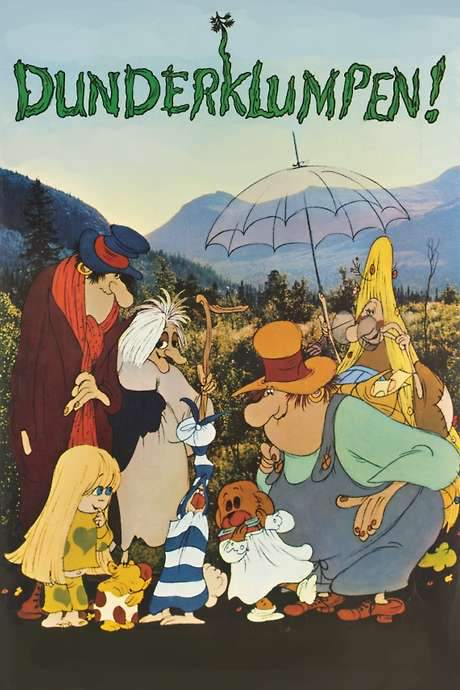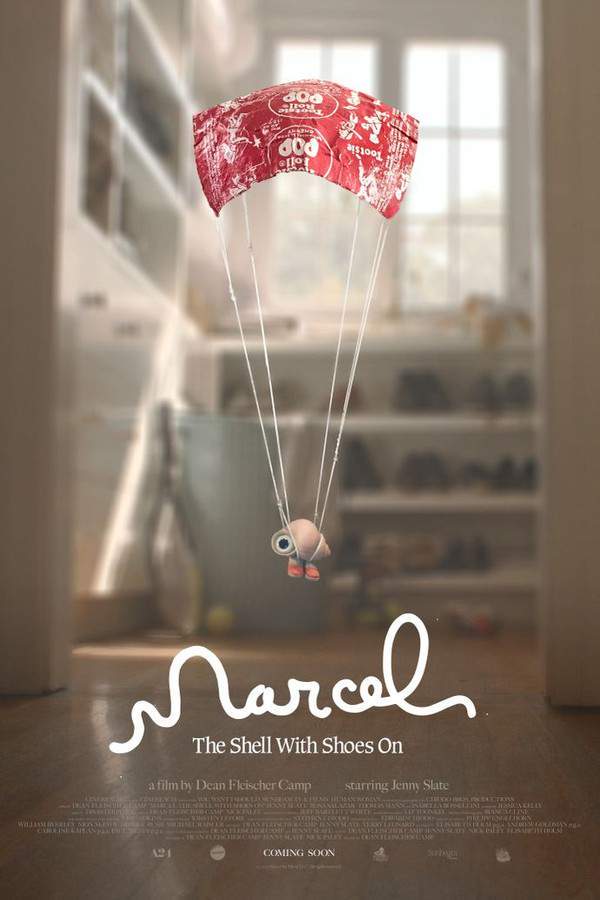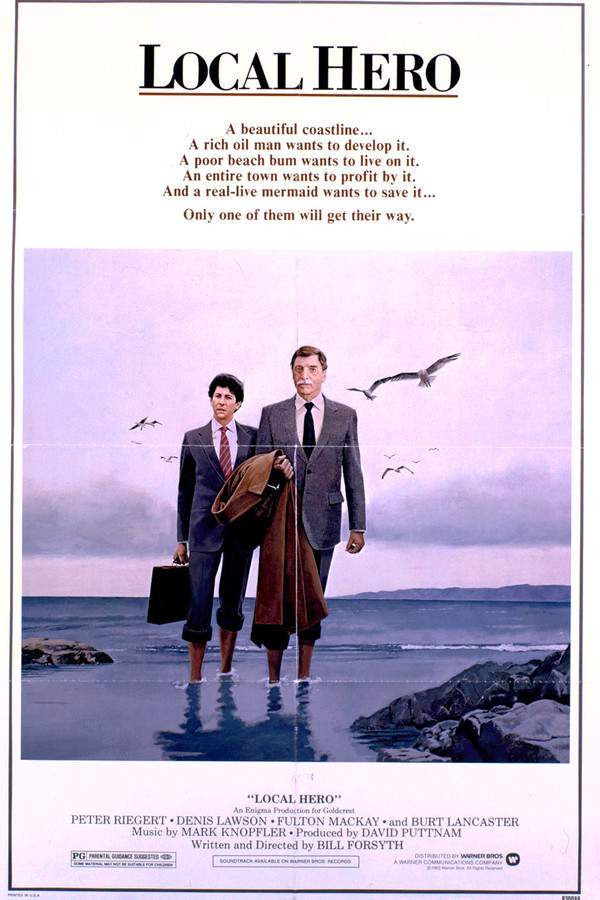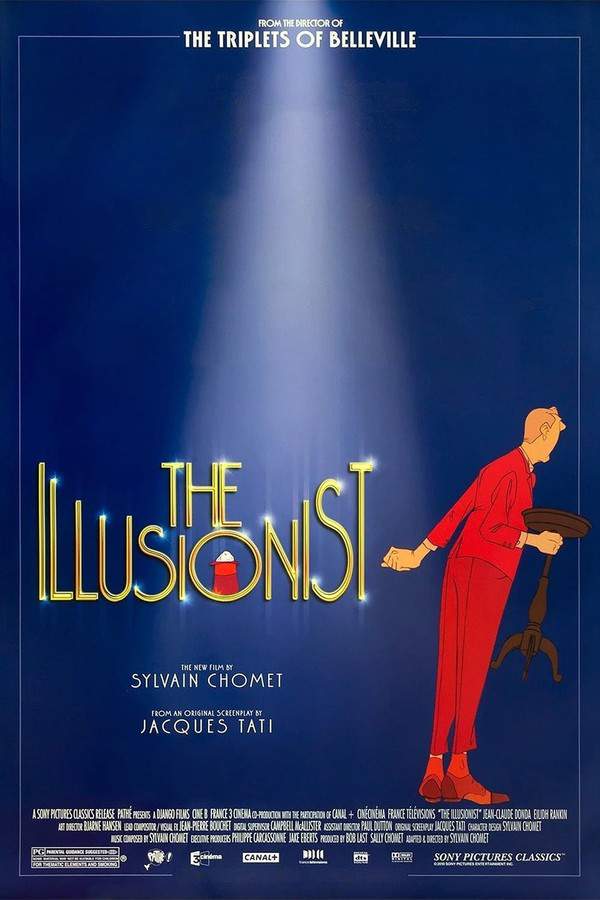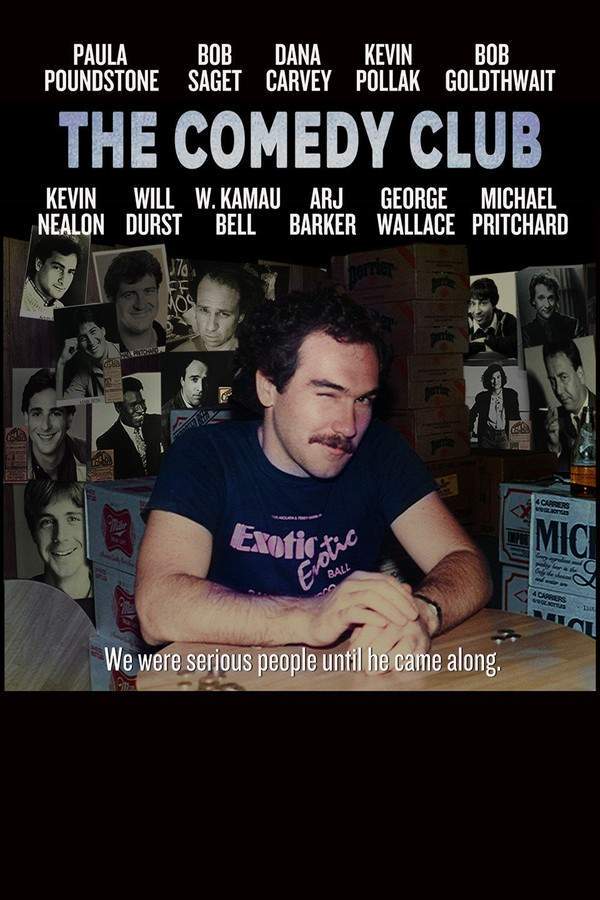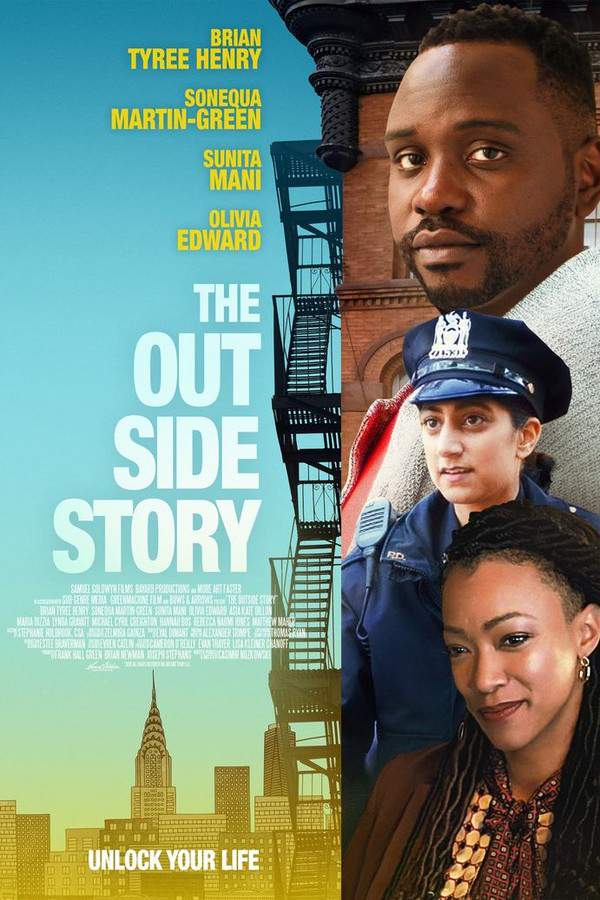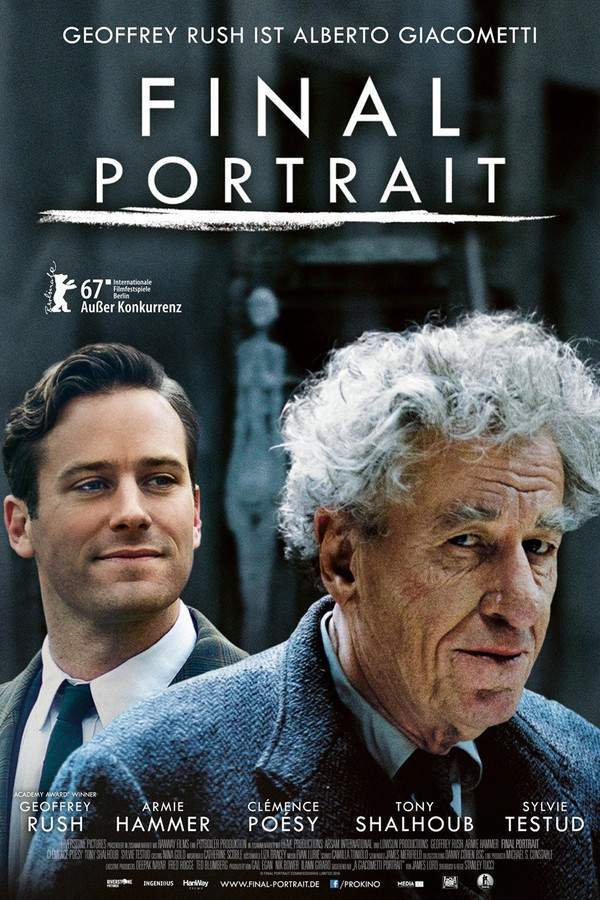
Marcel the Shell with Shoes On
Year: 2010
Runtime: 4 mins
Language: English
Marcel the shell gives an outline of his life.
Warning: spoilers below!
Haven’t seen Marcel the Shell with Shoes On yet? This summary contains major spoilers. Bookmark the page, watch the movie, and come back for the full breakdown. If you're ready, scroll on and relive the story!
Marcel the Shell with Shoes On (2010) – Full Plot Summary & Ending Explained
Read the complete plot breakdown of Marcel the Shell with Shoes On (2010), including all key story events, major twists, and the ending explained in detail. Discover what really happened—and what it all means.
Following the end of his marriage, documentary filmmaker Dean moves into an Airbnb and discovers Marcel, a one-inch-tall talking shell living in the home with his grandmother, Nana Connie, and Alan, his pet ball of lint. What begins as a quiet, observational project for Dean quickly blossoms into a tiny creature’s window into a much larger world. Marcel’s whimsy, resourcefulness, and boundless curiosity about life outside the tiny confines of the house pull Dean into a new purpose, one that blends intimate everyday moments with a need to understand where Marcel and his family came from. The partnership between the two deepens as Dean documents Marcel’s daily routines, capturing a landscape that stretches from yard scraps to small acts of ingenuity, all while Connie—wise and loving, though facing dementia—tends her garden with a tenderness that anchors the story.
As the pair grows closer, Marcel reveals a bittersweet truth: there used to be an entire shell community on the property—his mother, father, brother, and aunt—now scattered after the previous owners, Mark and Larissa, fought and left. A poignant sense of loss threads through Marcel’s days as he explains how the shells sheltered in a sock drawer during the upheaval. When Mark’s departure uprooted their world, only Marcel and Connie remained. Inspired by this history, Dean helps Marcel stage a livestream to reach out for help in locating his family, turning a private quest into a global appeal. The video draws a large audience, but the responses feel mixed: viewers cheer the tiny artist while many seem more eager to attach themselves to the phenomenon than to actually assist in the search. Marcel weighs the value of fame against the crumbling health of Connie, who watches the world online with a quiet, trusting heart.
The influx of attention alters the house’s rhythm, and Marcel grapples with the overwhelming contrast between his small, intimate life and the sprawling attention of the outside world. He convinces Dean to drive him around the city in search of Mark’s car, hoping to locate a tangible link to his scattered family. But the vastness of the world proves daunting, and a disheartened Marcel returns home to find Connie has fallen from a washing machine shelf, cracking her shell. He tends to her wounds with urgency and tenderness, a moment that hardens his resolve to protect her at all costs. Connie’s illness and fragility intensify Marcel’s sense of responsibility, and he grows more protective, more determined to preserve the life and dignity she has left.
The tides of change crest when 60 Minutes reaches out about a potential cover story, drawn by Marcel’s unique story and the growing curiosity about his family’s fate. Dean encourages him, but Marcel hesitates, fearing that the crew’s presence could further endanger Connie’s health and happiness. He tells Dean he won’t consent to the interview until Connie is fully recovered, a decision that becomes a deeply personal negotiation between living a meaningful life and preserving Connie’s well-being. In a quiet, painful moment, Connie pretends to show signs of improvement to coax Marcel into saying yes, urging him to seize the opportunity to find his relatives and build a future beyond the house. Marcel ultimately agrees, believing the interview could illuminate a path to his family’s reunion.
As the interview day arrives, Connie’s condition grows more fragile. The 60 Minutes crew sets up in the living room, and the moment is surreal: Lesley Stahl herself appears, a rare, almost magical encounter that awe-strucks both Marcel and Dean. The segment unfolds with sincerity and care, and the two end up participating in the interview together. Yet as the cameras roll and the story reaches its emotional peak, Marcel and Dean realize Connie is not just unreadable but gone, having died during the filming. They bury Connie in the garden, a quiet, solemn farewell that marks the end of an era and the beginning of a new chapter for Dean and Marcel. Dean signs a lease for a new apartment, signaling movement and change, yet the past lingers in the wind that brushes Marcel’s shell.
The channel of discovery continues as 60 Minutes follows new leads, locating Larissa in Guatemala and guiding the crew to Mark’s house. A tense confrontation unfolds as Larissa and Mark argue, revealing fresh memories and unresolved tensions. Marcel urges Dean and the crew to check Mark’s sock drawer, where the long-quiet shell community—now understood as a larger, shared history—re-emerges. The family of shells is finally found, and they come together again in the Airbnb, where Marcel can give Connie a proper farewell and lay her to rest with dignity. With Connie’s passing honorably acknowledged, Dean moves forward—signing another lease and beginning to date again—while Marcel, back in his own world, reflects on what it means to be reunited with family even as he continues to sense the wind in the laundry room window. The sound it makes becomes a small, poetic reminder of connection and possibility, a whisper that links all things.
In the final moment, a subtle, hopeful note emerges: Dean introduces Marcel to his new apartment, a sign that life continues, relationships endure, and even the tiniest of beings can leave a lasting imprint on the world. The closing images linger on the idea that belonging isn’t limited to proximity or size but lives in the shared memories, the found family, and the quiet moments when wind and shell meet in the glow of a window.
Last Updated: October 09, 2025 at 16:58
Explore Movie Threads
Discover curated groups of movies connected by mood, themes, and story style. Browse collections built around emotion, atmosphere, and narrative focus to easily find films that match what you feel like watching right now.
Movies with a whimsical melancholy like Marcel the Shell with Shoes On
Stories that blend gentle humor with poignant reflections on life and loss.Discover movies like Marcel the Shell with Shoes On, where a gentle, whimsical tone meets poignant emotional depth. These films often explore themes of loss, memory, and connection through unique characters and perspectives, creating a bittersweet yet hopeful viewing experience perfect for quiet reflection.
Narrative Summary
The narrative pattern in these films is typically character-driven and observational. They follow protagonists—often quirky or isolated—as they navigate their world, reflecting on their past and present. The central conflict is often internal or relational, focusing on themes of connection, aging, and grief, rather than high-stakes external plots. The journey is one of quiet discovery and emotional acceptance.
Why These Movies?
Movies are grouped here because they share a specific tonal blend: a whimsical, often humorous surface layered over a core of genuine melancholy. Their pacing is slow and deliberate, allowing for intimate character study. They evoke a similar mix of feelings—tenderness, nostalgia, and a gentle sadness—that makes the emotional payoff feel earned and profound.
Movies with an intimate documentary style like Marcel the Shell with Shoes On
Character-focused stories told with the authenticity and closeness of a documentary.If you liked the personal, documentary feel of Marcel the Shell with Shoes On, explore these movies that use a similar intimate, observational style. They focus deeply on character, creating a sense of authenticity and emotional connection through stories that feel real, heartfelt, and closely observed.
Narrative Summary
Narratives in this thread unfold as if being discovered in real-time, often through interviews, direct address, or a camera's-eye view. The structure is typically straightforward, prioritizing the emotional arc of its subject over complex plotting. The journey is one of revelation and understanding, as the film slowly builds a portrait of a life or a relationship.
Why These Movies?
These films are grouped by their shared approach to storytelling. They prioritize an intimate, first-person perspective that makes the viewer feel like a confidant. The pacing is slow and observational, the tone is often bittersweet or reflective, and the emotional weight comes from the authenticity of the character's experience.
Unlock the Full Story of Marcel the Shell with Shoes On
Don't stop at just watching — explore Marcel the Shell with Shoes On in full detail. From the complete plot summary and scene-by-scene timeline to character breakdowns, thematic analysis, and a deep dive into the ending — every page helps you truly understand what Marcel the Shell with Shoes On is all about. Plus, discover what's next after the movie.
Marcel the Shell with Shoes On Timeline
Track the full timeline of Marcel the Shell with Shoes On with every major event arranged chronologically. Perfect for decoding non-linear storytelling, flashbacks, or parallel narratives with a clear scene-by-scene breakdown.

Characters, Settings & Themes in Marcel the Shell with Shoes On
Discover the characters, locations, and core themes that shape Marcel the Shell with Shoes On. Get insights into symbolic elements, setting significance, and deeper narrative meaning — ideal for thematic analysis and movie breakdowns.

Marcel the Shell with Shoes On Spoiler-Free Summary
Get a quick, spoiler-free overview of Marcel the Shell with Shoes On that covers the main plot points and key details without revealing any major twists or spoilers. Perfect for those who want to know what to expect before diving in.

More About Marcel the Shell with Shoes On
Visit What's After the Movie to explore more about Marcel the Shell with Shoes On: box office results, cast and crew info, production details, post-credit scenes, and external links — all in one place for movie fans and researchers.




